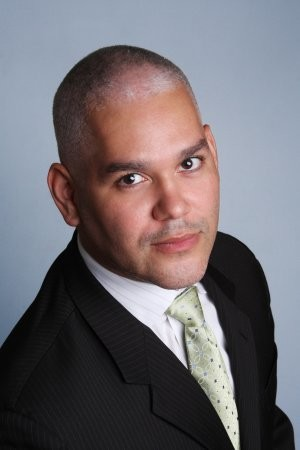Single-Port Robotic Surgery Promotes Expert Tonsil Cancer Treatment
After having surgery, chemotherapy and radiation in 2019, Michael Rodriguez, 50, remains cancer-free
In 2019, Michael Rodriguez of Weehawken, New Jersey, began to experience sore throats that would come and go every few weeks. When the pain started to worsen, Michael went to an ear, nose, and throat (ENT) specialist for a checkup.
When a throat swab to check for a bacterial infection found nothing, Michael’s ENT ordered imaging tests and referred him to Chan Park, M.D., an ENT at Hackensack University Medical Center specializing in robotic head and neck surgery. Within a week, Michael scheduled an appointment with Dr. Park and learned the cause of his sore throat episodes: tonsil cancer.
Dr. Park said Michael’s tonsil cancer was caused by a strain of human papillomavirus (HPV) that is also associated with cervical cancer in women. Michael’s tonsil cancer likely developed slowly over many years. However, due to the lack of a screening test to check for precancerous cell changes in the throat, tonsil cancer often goes undetected until it begins to cause symptoms or spreads to other areas of the body.
“When I heard the diagnosis, it was overwhelming — it was like I was in the room, but not in the room,” said Michael.
Fortunately, Michael had a strong family support system, including his husband, Christopher, and Christopher’s mother, who is a nurse.
“Christopher was with me every step of the way, and having a nurse in the family helped us to understand what questions we should ask and how the treatment process would work,” said Michael.
Signing Up for Robotic Surgery
After performing a biopsy to confirm Michael’s diagnosis, Dr. Park recommended surgery to remove the tumor in his tonsils.
“Dr. Park said he would perform robot-assisted surgery, which would allow him to remove the cancer with greater precision and a smaller incision,” said Michael. “He also told me there would be less pain, a faster recovery, fewer complications and less bleeding with robotic surgery, so I signed up immediately.”
In August 2019, Dr. Park performed Michael’s transoral robotic surgery (TORS) procedure using the da Vinci SP single port surgical system. The da Vinci SP has a single cannula that contains multiple small surgical instruments that can easily reach the back of the throat. The single port robotic surgical system also includes a small camera that transmits an image of the surgical area to the surgical console where Dr. Park sits to operate the robot, giving him a 3D, magnified view.
“Thanks to minimally invasive robotic surgery, we can now see and remove tumors of the tongue and throat that were previously difficult or impossible to reach,” said Dr. Park. “The enhanced visibility allowed me to see the margins of Michael’s tumor very clearly so I could get rid of the cancer with minimal damage to the surrounding tissues.”
That enhanced visibility also revealed cancerous tissue in a portion of Michael’s tongue and in the back of his throat, which Dr. Park also removed. Dr. Park also removed Michael’s cancerous lymph nodes during a procedure called a neck dissection.
“For the first few days after surgery, swallowing was painful,” said Michael. “I could eat better after about the first week, but it took about two weeks for my voice to come back.”
A few weeks after surgery, Michael started simultaneous chemotherapy and radiation treatments. He had his final treatment session in November 2019.
“It took a while to come back from that,” said Michael. “However, it slowly got easier to go up steps and hold conversations, and eventually, I was sleeping less and feeling less nauseous.”
Cancer-Free After One Year
But despite the challenges he faced, Michael said his family support system and the staff at Hackensack University Medical Center helped him get through it.
“The radiation and medical oncology staff helped everyone laugh and stay positive, and I can see how that helps people to navigate their treatment and move beyond it,” said Michael.
Although Michael, now 50, still has some lingering side effects from his radiation and chemotherapy treatment, he has been cancer-free for more than a year. He continues to have follow-up visits with his physicians and is incredibly grateful for the care they provided.
“All my doctors were fantastic — always giving me tough love and telling me to fight, fight, fight,” said Michael.


